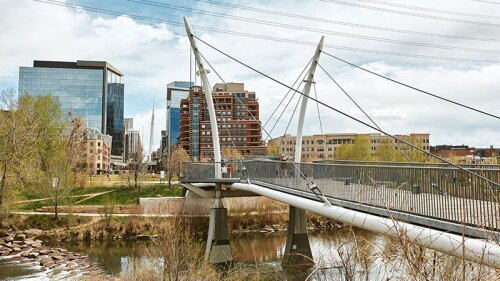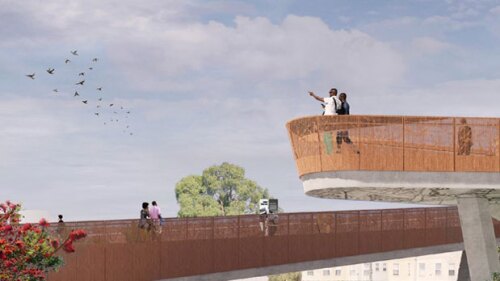In an era of shrinking government budgets, public/private partnerships are becoming an increasingly popular way—and often the only way—to improve, maintain, and operate successful public parks and spaces. Two examples of this model, one well-established and the other just getting off the ground, were presented at the ULI Washington Real Estate Trends conferencein the nation’s capital on April 17.
Bryant Park, located in the heart of midtown Manhattan adjacent to the New York Public Library, is the country’s largest privately funded and operated park. A potter’s field in the early 1800s, this 9.6-acre (3.9 ha) space has been used as a public park since the 1840s. By the 1970s, it had become a dangerous haven for criminal activity and, with the moniker “ Needle Park,” was a symbol of the city’s decline.
In 1980, a group of prominent New Yorkers, including members of the Rockefeller family, founded Bryant Park Restoration Corporation. One of its founders, Daniel Biederman, spoke to the ULI audience. Privately funded restoration began in 1988 and the park re-opened in 1992. Public funding ended in 1996, and the renamed Bryant Park Corporationnow receives funding from business improvement district assessments, corporate sponsorships, event fees, restaurant rent, assessments, and other sources.
“Privatization of Bryant Park has created value for surrounding real estate,” Biederman told the group. “Adjacent buildings have increased their effective rents, and now developers are naming buildings after the park.”
Biederman noted that one marker of success is that more than half the park’s users – counted twice daily by interns – are women. “Women are much more discriminating users of public spaces than men,” he said. “They notice details like smells and crumbs on tables. We know we are succeeding when we see the park full of women and strollers.”
Bryant Park has been able to take advantage of corporate sponsorships while maintaining strict control. “I often challenge people to find the corporate logos in the park,” Biederman said. Logos for Coke, for example, are confined to the edges of the park’s ping-pong tables and its ping-pong balls. Southwest Airlines operates a single beverage kiosk.
John “Chip” Akridge, chairman of The John Akridge Companies, is chairman of the Trust for the National Mall, which is working as a private partner of the National Park Serviceto bring this dynamic to the nation’s capital. Trust President Caroline Cunningham, addressed the Trends conference.
| Photo by: Alex Boykov |
Cunningham pointed out that, with more than 24 million visitors, the National Mallhas more visitors annually than Yosemite, Yellowstone, and the Grand Canyon national parks combined. Surveys have found that 97 percent of Americans know of the National Mall and about 70 percent are willing to donate to support it. The Mall has suffered, however, due to deferred maintenance, neglect, disrepair, deteriorating infrastructure, and lack of amenities.
The Trust aims to obtain $350 million in private donations, about half of the amount needed to implement the National Mall Plan, which was signed in 2010 to provide a blueprint for restoration of the Mall and to guide its future over the next 50 years. A design competition has yielded 12 finalists proposing ideas for the renovation of Union Square at the foot of the U.S. Capitol, the Washington Monument grounds, and Constitution Gardens. All of the proposed solutions, Cunningham noted, include plans for restaurants, restrooms, and other amenities. The Trust also hopes to develop opportunities for virtual and experiential learning.





